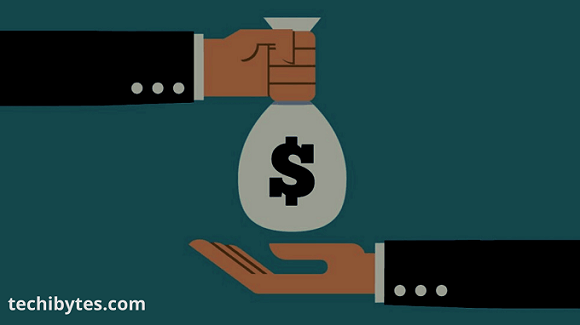When seeking money for your business, it’s critical to ask yourself, “How do investors make money from startups?” and have a good grasp of how and what the process entails.
The method for compensating investors is not always as straightforward as just calculating their return on investment and dividing it equally among the important actors in the transaction.
There are sometimes complicated criteria governing how the persons managing investments earn money when it comes to angel funds, venture capital funds, and other investment alliances.
Investing in startups is not for those who are easily intimidated. Money raised from founders, friends, and family (FF&F) might readily be misappropriated with little to show for it. While investing in venture capital funds diversifies certain risks, it also compels investors to confront the hard fact that 90% of firms backed will fail to reach the initial public offering stage (IPO).
Those who go public can earn returns in the hundreds of percent range, making early investors extremely rich. A company goes through several stages, each presenting unique opportunities and dangers to investors.
What exactly is startup funding, and how does it work?
With their investment, startup investors are purchasing a portion of its stock. They are investing funds in return for equity: a stake in the business and the right to a percentage of its future revenues.
By doing so, investors create a partnership with the businesses in which they invest – if the company succeeds, investors receive returns proportional to their equity stake in the business; If the firm fails, the investors will lose their money on the deal.
Liquidity refers to the ease with which security (something you own that has an economic worth) may be converted into cash. Equity in a well-traded public corporation may be traded on the stock exchange very instantly, making it highly liquid. Due to the difficulty of selling equity in a company, it is relatively illiquid.
For example, startup stock is viewed as a high-risk, high-reward, and extremely illiquid asset type. This implies that investing in startup equity is highly hazardous. Many firms fail to repay investors’ money, and startup ownership is more difficult to sell before the company’s initial public offering (IPO). However, this heightened risk and illiquidity are offset by the possibility of a massive return if the firm succeeds.
RISK AND REWARDS OF STARTUPS INVESTMENT
RISK
• Timelines: It typically takes seven to ten years for companies to have a significant stock purchase (though smaller liquidity events may occur earlier).
• Selling Stock: Selling startup shares before the first public offering is more challenging, as equities are sometimes issued with stipulations such as a right of first rejection and other limitations on secondary sales.
REWARDS
• Diversification; The importance of diversification is that investors incorporate a high-risk, high-reward asset class in their portfolios.
• Entrepreneurial Community: Encourage new entrepreneurs and assist businesses they believe in.
• Networking: Meet and network with owners, other investors, and engaged community members in the connected business industry.
• Maintain relevance by staying current on emerging technology trends and leading companies.
• Revenues: If an early investor invests in a very successful company, the potential for outsized returns substantially exceeds the returns on other forms of investments.
WHY DO INVESTORS PUT THEIR MONEY INTO STARTUPS?
Even though investing in startups is a high-risk financial enterprise, there are five reasons why it may be worthwhile:

1. Investing early reaps more rewards
The emergence of crowdfunding has reduced the hurdles to being an early-stage investor. As a result, the lower overhead capital needs to be combined with the possible high gains associated with an exit plan to entice investors.
2. Portfolio Diversification
It is not advisable to place all of your eggs in one hoop while investing. Investors employ portfolio diversification strategies to prevent suffering a significant loss on their assets.
Diversification of your portfolio entails investing in a variety of asset classes. As a result, financial risks will be significantly reduced. This is where startups come into play; venture capital is fundamentally different from traditional assets such as bonds and equities.
3. Optional Range
Startups exist in a variety of sectors and new marketplaces. Entrepreneurs are searching for investment in technology, health, or agriculture. You may invest in businesses that align with your objectives and financial resources.
4. Social Impact Investing
Because startups often produce goods and services that fulfill customer requirements, investing in startups supports innovation. Thus, green technology, medical technology, and sustainability firms are highly appealing to socially concerned investors, and impact investment is a win-win situation for investors and startups. Their ideas receive critical finance, while investors earn a profit.
5. Possibility of Buy-Out
Startups are often in the sphere of innovation; they create new technologies, which established organizations will acquire if they can harness these innovations to grow their businesses, this is referred to startup exit.
HOW DOES STARTUP INVESTMENT WORK?
Funding a startup allows outside investors to put funds in a developing business in return for equity or a portion of the company. This comprises several fundraising phases: pre-seeding, seeding, series A, series B, and Series C.
Pre-Seed Funding
The initial step of funding a new business occurs so early in the cycle that it is often not included in subsequent investment rounds. Often referred to as “pre-seed” funding, this stage usually refers to the period during which a company’s founders are establishing its operations.
The founders personally and close friends, fans, and family are the most prevalent “pre-seed” financiers. This fundraising stage might occur fast or take a long time, depending on the type of business and the early expenditures associated with establishing the business idea.
Seed Funding
Seed investment enables a business to finance its initial steps, such as market development and commercialization. A company receives support in defining its ultimate goods and target audience with seed capital, and seed capital is utilized to hire a founding team to accomplish these responsibilities.
In a seed fundraising situation, there are several prospective investors: entrepreneurs, friends, family, incubators, and venture capital firms, to name a few. A so-called “angel investor” is one of the most prevalent sorts of investors in seed investment. Angel investors typically prefer riskier initiatives (such as startups with a limited track record) and expect to receive an ownership share in the business in exchange for their funding.
Series A
Investors in Series A investment are not only searching for exceptional concepts. Rather than that, they search for startups with excellent ideas and a good plan to turn those ideas into profitable businesses. As a result, organizations undergoing Series A investment rounds are frequently valued at $23 million.
More typical venture capital groups led the Series A investment. Sequoia Capital, Benchmark Capital, Greylock, and Accel Partners are well-known venture capital companies that engage in Series A fundraising.
Series B
Series B firms are well-established, and their appraisals reflect this; most Series B companies have a value of between $30 million and $60 million, with an aggregate of $58 million.
On the surface, Series B appears to be a close match to Series A’s methodology and significant players. Many of the same personalities frequently head series B as the previous round, including a considerable anchor investor who helps attract further investors. The distinction between Series B and Series C is the arrival of a new wave of venture capital companies focused on later-stage financing.
Series C
Investors use series C rounds to infuse cash into the core of successful firms in the hopes of receiving more than double the amount they initially invested back. Series C capital is targeted at scaling the business, ensuring it grows as swiftly and profitably as feasible.
HOW DO INVESTORS MAKE MONEY FROM STARTUPS AFTER INVESTING
• A startup is acquired:
This is typically the quickest method for an investor in a business to recoup their initial investment. When a startup is purchased, the acquiring company may pay the investor in cash or new shares (or a mixture of the two). Thus, the return on investment from a merger or purchase of this nature is contingent on the investor’s stake in the startup and the acquisition price. We can see this happen more recently in the space; eg: Stripe X Paystack.
• The startup’s initial public offering (IPO):
In a new stock issue, the firm can sell shares to the general public, allowing the company to raise funds from institutional investors. For instance, if you purchased $10,000 in Amazon, Dell, Apple, or Microsoft at their first public offerings, you would have earned a million dollars from that investment alone, according to the IPO Playbook.
• Start of dividend payments:
Certain firms choose not to be acquired or go public because their founders have a vision of running huge, independent enterprises. To repay investors, they either distribute a portion of their cash flow in regular dividends. If their balance sheet has accumulated enough cash, they can allocate an amount of that cash in a one-time, unique premium.
• Investors sell stock to other investors:
In most cases, investors in startups have the option of reselling their shares to a third party for a profit if they can locate another buyer.
FAQ
1. Can you get rich investing in startups?
This is a high-risk, high-reward venture. Occasionally, startups will refund your money if the firm cannot raise sufficient cash or if the company guarantees the return of your money. It’s worth emphasizing that, unlike stocks, startup investments are often not tradable.
2. How much should an investor put into a startup?
A typical investment ranges between $15,000 and $250,000. However, this range might vary considerably. Typically, angel investors invest a small amount of money in a new firm. Often, angel investors are friends or family members, and Additionally, they may be seasoned venture capitalists or business people.
3. Are companies required to repay investors?
Instead of taking out a loan, entrepreneurs can raise the money they are not obligated to return; this implies that the owners are granting investors perpetual rights to a part of the company’s income, which might be substantial.
4. How do investors get paid back?
They can return investors by paying out recurring dividends or by paying out a one-time unique premium if they have adequate cash on their balance sheet.
CONCLUSION
These are among the ways investors might be compensated; occasionally, investors will utilize convertible loans to fund transactions. These are loans that have the potential to be converted to equity at a later date.
Regardless, investors should closely monitor how a firm is valued, who owns the stock, and most critically, who controls the rights to determine if a startup may be sold. Beginner angel investors are frequently unaware of such phrases, which can significantly influence future investment returns.









